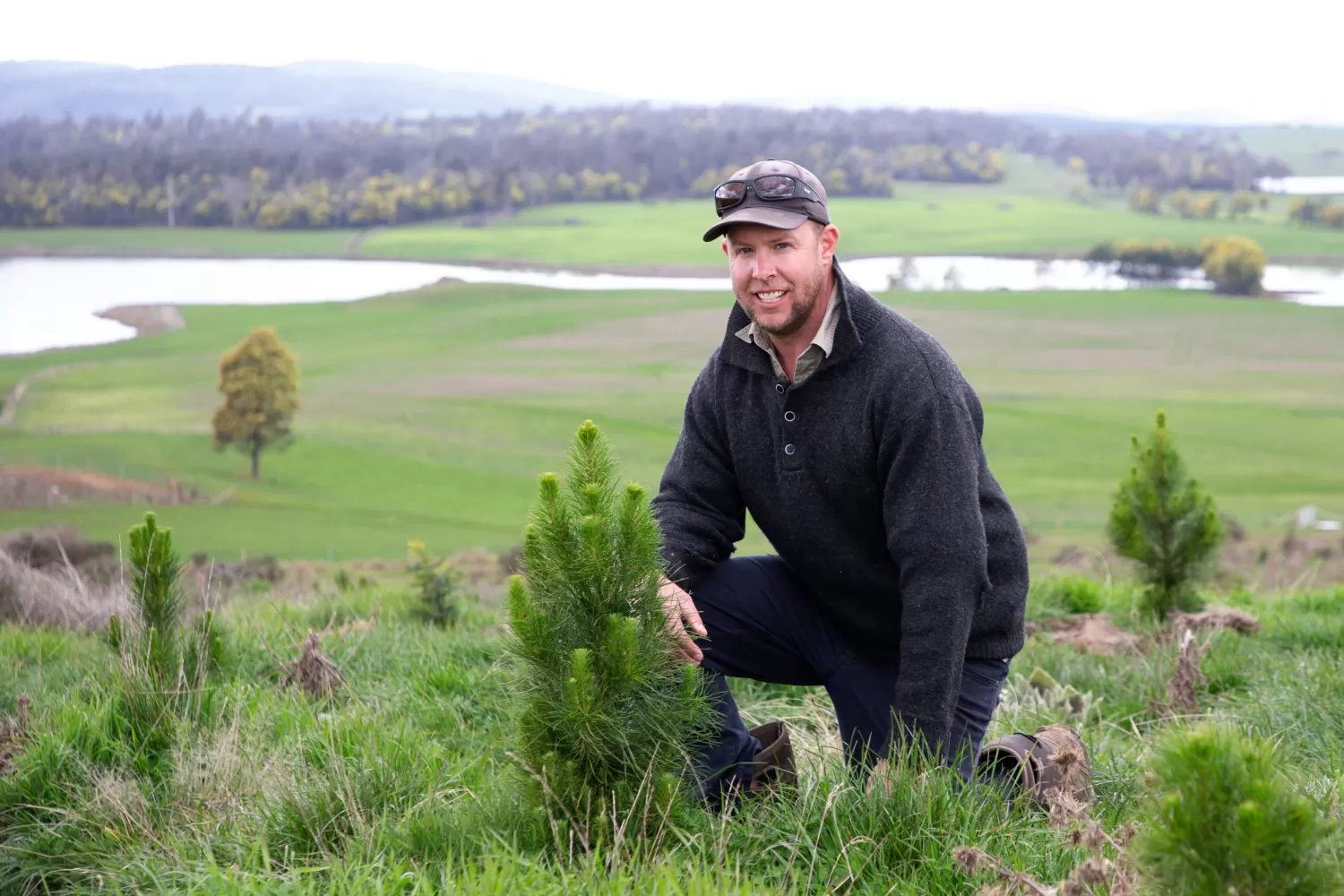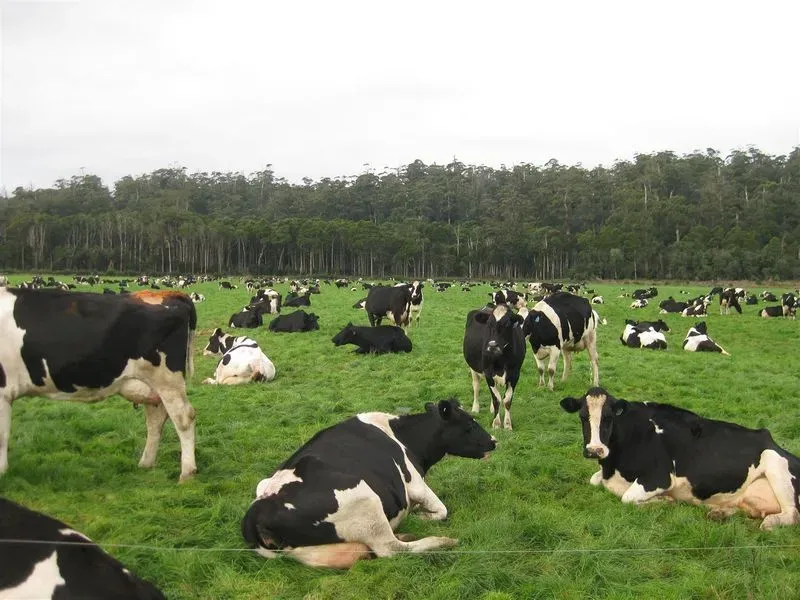Farm forestry guides
How to plan, establish and manage trees on your farm
Farm forestry guides
This series of fact sheets gives you an introduction to plan, maintain and harvest plantations on your farm. They were developed by Private Forests Tasmania.
For more information or to get personalised advise about trees on your farm:

No. 1 - Selecting Species and Site
For best tree growth, climate and soil type should match the tree species in its natural environment. When selecting species, consider which markets exists and are within your ability to manage
No. 2 - Farm Shelter
High wind speeds and rain lead to chilling of livestock and physical damage to crops. Well placed and well managed shelterbelts can be used to increase agricultural productivity.
No. 3 - Plantation establishment timetable
Basic guidelines and timelines for the successful establishment of radiata pine on farmland.
No. 4 - Plan for tree planting
Before planting a tree, you should consider the effects it will have on your farm, its infrastructure and services. A plan is necessary regardless of the number of trees planted.
No. 5 - Plantation establishment summary
Plantation establishment includes site preparation, weed control, planting, fertilising, vermin control and re-planting. Establishment can take up to 12 to 18 months.
No. 6 - Site preparation
Clearing the site of previous vegetation, cultivating the soil and controlling weeds are important steps in preparing your site for tree planting.
No. 7 - Weed control
Weeds compete with trees for water, nutrients and light and can affect the growth of the tree and the profitability of plantations.
No. 8 - Planting
Planting stock may be raised as seedlings or cuttings. Seedlings are cheaper, but for best planting stock, seedlings should be forwn from genetically improved seed collected from a seed orchard.
No. 9 - Browsing damage to seedlings
Browsing damage by possums, wallabies, kangaroo, rabbit and deer can affect the growth rate and form of seedlings. Control of browsing animals is essential to successful plantation establishment.
No. 10 - Pests and disease
Trees can be severely damaged or killed by native and introduced pests and disease. Keep an eye on your trees by conducting regular inspections of forest areas.
No. 11 - Pruning
Pruning is the removal of branches from the main trunk of a tree to improve the quality and value of the timber product produced.
No. 12 - Thinning
Thinning is the selective removal of some trees from a stand and reduces competition for light, water and nutrients. Thinning can be either non-commerical or commerical.
No. 13 - Utilisation of farm grown wood
Farm forests have many uses including wood products (firewood, posts and poles, pulpwood, sawlogs, veneeer logs) livestock and crop shelter, tourism and aesthetics.
No. 14 - Forest Certification
A fact sheet explaining the forest certification process including Chain of Custody and Group Certification for both native forests and plantations.
You may also find Harvesting and selling wood and Economic benefits and markets of use with this information.
No. 15 - Tree species list
A list of tree species with the potential to grow in Tasmania including site requirements and other factors to form a guide to assist you match potential trees species to proposed tree planting sites.
Reducing the carbon footprint of Tasmanian dairying - 10 steps
Funding from the Tasmanian Climate Change Office is helping DairyTas identify ways to reduce the carbon footprint of dairying in Tasmania. This project involves research, case studies and extension activities. DairyTas is partnering with LIC and Private Forests Tasmania's Tree Alliance in the delivery of this project. Other project partners are assisting with specific topics.
Of particular interest to farm foresters is Step 8 - Keep cows comfortable and plant trees which discusses how trees on dairy farms is a win for carbon, animal welfare, biodiversity, plus economic benefits.

The 10 Step Summary
875.7 KB
Step 1 - Know where emissions come from
647.2 KB
Step 2 - Make every cow count
658.7 KB
Step 3 - Efficient cows are key
1.7 MB
Step 4 - Enduring cows
596.6 KB
Step 5 - Home grown goodness
956.6 KB
Step 6 - Smarter energy use
855.7 KB
Step 7 - Be Fertmart
1.5 MB
Step 8 - Keep cows comfortable PLANT TREES
1.1 MB
Step 9 - Carbon farming rivers soils and trees
1.3 MB
Step 10 - Keep learning
612.3 KB
